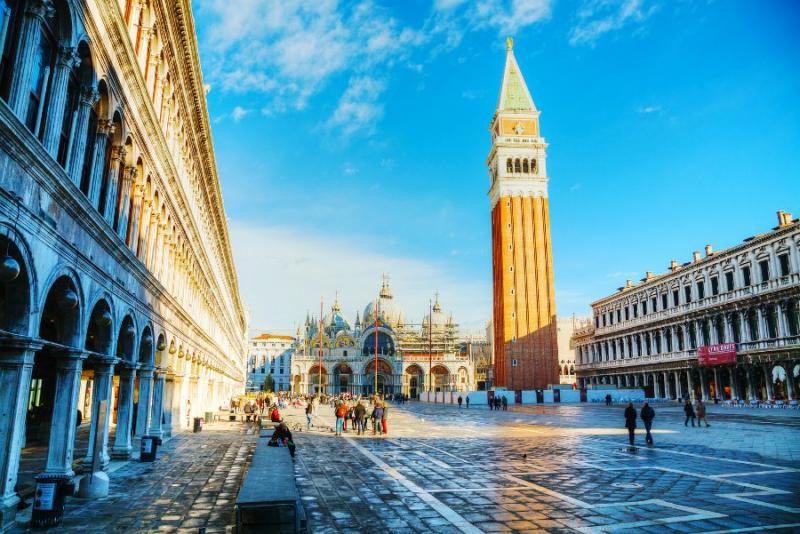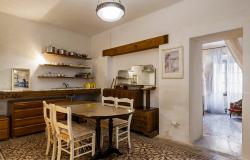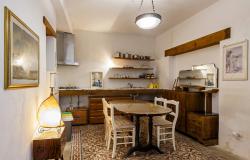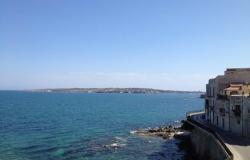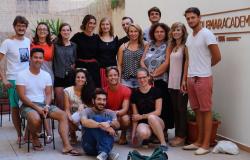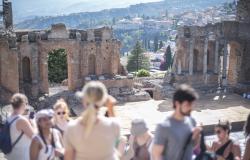"È mezzanotte, Devo chiudere la piazza. Andate via. La Piazza è Mia! La Piazza è Mia!"
" It's midnight. I've got to shut down the square! Go away. The square's mine! The square's mine!"
When you mention the film Nuovo Cinema Paradiso most people immediately recall the famous 'kisses montage scene' (a film reel containing all of the kisses removed from the movies shown at the Paradiso over the years.). I always think about one of the early scenes when a wide-eyed man enters the frame and declares, 'La piazza è mia' (The square's mine!) running about closing 'his' square. The people who had been sitting in the piazza for the outdoor cinema, take their chairs and leave indulging his fantasy.
Director Tornatore, captured in that scene the essence of the "Italian Piazza", the very core of the community, the heart of every town, its rhythm, its life.
It is said that the character played by Italian actor Nicola Di Pinto, was not in the original script of the movie, but was inspired by a real man, Saverino, who had a similar attachment to the piazza of Palazzo Adriano, in the province of Palermo, one of the main location for Tornatore's masterpiece. While the troupe was in town to shoot the scene in the main square, Saverino suffered the presence of strangers taking over his space. Everyday he patiently waited for the shooting to end, presiding over the square and staring at the troupe in dismay.
In his strange world, Saverino had understood the value of the Italian Piazza, that magic balance of art, architecture and human interaction that has grown through usage over hundreds, even thousands, of years, into the beating heart of an Italian community.
In every town and city, a Piazza is a convenient place to meet, to observe generations growing older, to see a community embracing traditions and changes, while at the same time struggling with both.
Le Mie Piazze
Growing up in a small town in Sicily, my experience of the Piazza has evolved over time. When I was a child I used to go to the town square to play with other children in the early afternoon. As a teenager I used to hang with my friends every Saturday evening after the traditional 'passeggiata'. When I went to live abroad the local piazza was the first place to visit every time I returned home, simply the easiest way to tell all my friends I was back in town. Now, as a parent, I take my daughter to the piazza to play with other kids.

Then I fell in love with San Marco square in Venice, when I moved there to study. Every time I am in town I pay a visit, even if I am there just for half a day. I just need to say hi!
Observations from others about the Piazza and, Sicilian piazzas in particular, have also led to a good share of heated discussions. People will often express shock that on visiting a Sicilian town pizza they found only old men sitting around. 'Where are the women?' they asked.

To explain what they saw it was necessary to walk them through the typical time routine of a Sicilian piazza. Pupils going to school crowd the piazza in the morning, followed by people coming in and out public offices, bars and banks. Lunchtime is usually desert-time, followed by the 'old men' reunion at the bar playing cards, or sitting on the benches and talking politics. The wifes celebrate the fact they got rid of them and have friends over for coffee. Later in the evening kids come around to play, followed by teenagers and young people hanging around - often into the late hours.

I even found myself defending the beauty of Piazza San Marco in Venice, 'Too touristy to be appreciated!' people complained. And there I was explaining the magic of one of the most beautiful squares in the world and, again, telling people about the daily life of the square and the best times to enjoy it.
La Vostra Piazza
Italy is one of the countries with the highest number of well preserved historical squares, visited each year by numerous tourists. Among the most well known and visited piazzas are Piazza della Signoria and Piazza della Repubblica in Florence, Piazza del Campo in Siena, Campo dei Miracoli in Pisa, Piazza del Plebiscito in Naples, many central piazzas of Rome, the famous Piazza San Marco in Venice, Piazza Duomo and Piazza Cordusio in Milan, Prato della Valle in Padua and Piazza Carlo III in Caserta, which is the largest in Italy (130,000 m2).
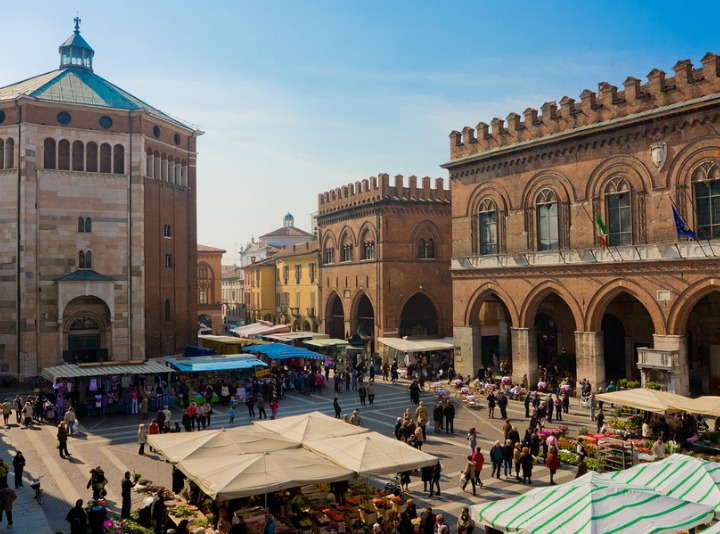
While the ones listed above are the most famous Italian squares, we have to remember that many other less well-known (if not unknown) piazzas, have nothing to envy in terms of beauty and monumentality when compared to those of major Italian cities, for example the Renaissance Piazza della Loggia in Brescia, Piazza Ducale in Vigevano and the medieval Piazza del Comune in Cremona, Venetian style Piazza Libertà in Udine, or even the medieval Piazza del Duomo in Trento and Piazza Duomo in Ortigia, Siracusa, with its mixture of Greek ruins and baroque architecture. So whether you are visiting a big city or a smaller town, never miss the chance to visit the piazza.
Finally here are 5 tips to help you get the most out of your visit:
- Visit the main Piazza of a town in different moments during the day to capture its changing faces.
- Sit at a local cafe to mingle with the locals, relax and enjoy the atmosphere.
- A piazza can be turned into a marketplace, an open-air cinema, a concert venue, a playground, an open air church and any number of other activities. Before traveling, look for information about possible special events to attend while you are visiting.
- As they are the beating heart of a community, piazzas are often the main centre of protest too. To avoid getting unexpectedly involved in demonstrations of all sorts, it is always a good idea to check with the locals first. This could be particularly relevant in Rome, as its the capital!
- Visit the piazza when no one is around, early in the morning or late at night. Immerse yourself into its atmosphere on your own, you will feel like you own the place and in the end you might agree with Saverino and find out that you really wish the Piazza was just and only yours.
